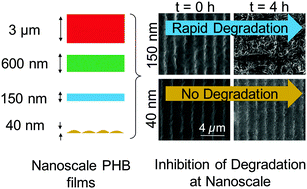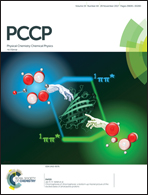Enzymatic degradation of dimensionally constrained polyhydroxybutyrate films
Abstract
The effect of dimensional constraint, imparted by a variation in film thickness, on the enzymatic degradation of polyhydroxybutyrate (PHB) is reported. The characterization of the crystalline structure and the surface topography of solvent-cast PHB thin films revealed strong correlations between film thickness and both crystallinity and crystal anisotropy, with the polymer film becoming more amorphous with decreasing thickness. The enzymatic degradation of the PHB films was characterized using a high precision diffraction metrology, which enabled the visualization of small variations in the degradation behavior. The results show that the degradation rate increases with decreasing thickness due to the corresponding decrease in crystallinity. However, in a nanoscopic ultra-thin PHB specimen, produced by μ-transfer molding, enzymatic degradation was impeded. The enzymatic degradation rate of the PHB films therefore was found to exhibit a discontinuous trend with respect to film thickness: initially increasing as film thickness was reduced, and then decreasing dramatically once the thickness was reduced to tens of nanometers. In this regime, enzymatic degradation was hindered by the absence of crystalline regions in the films. These results show that a nano-dimensional constraint on PHB films can result in specimens with a tunable response to extracellular enzymes.



 Please wait while we load your content...
Please wait while we load your content...